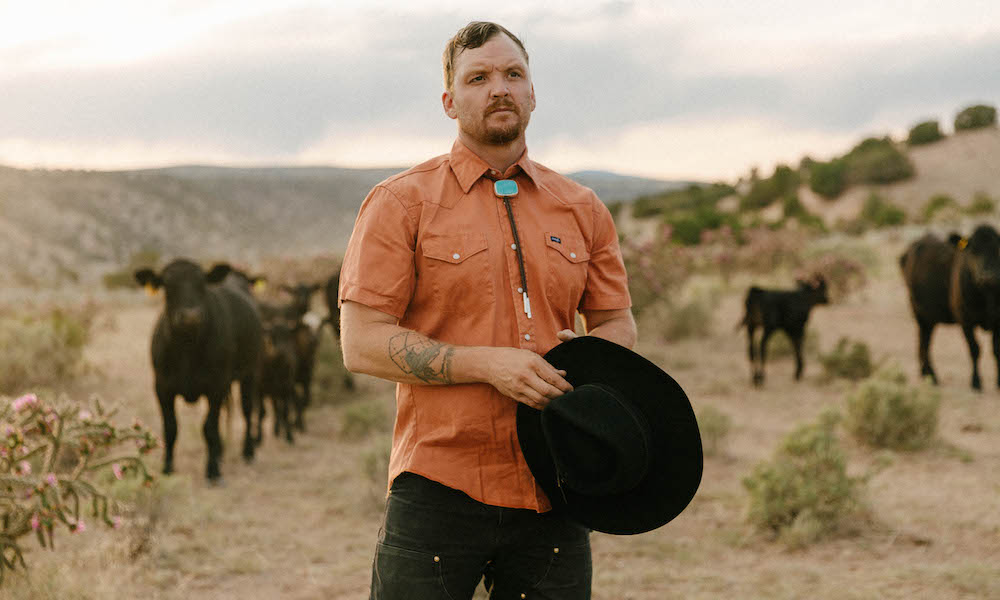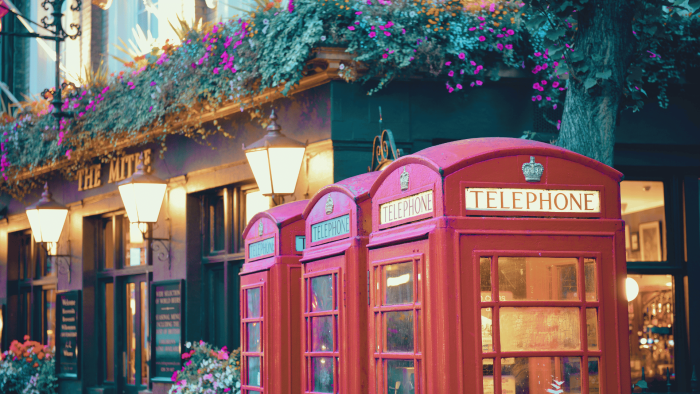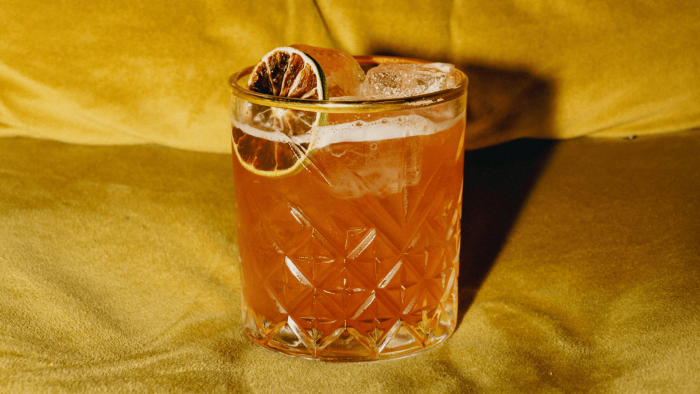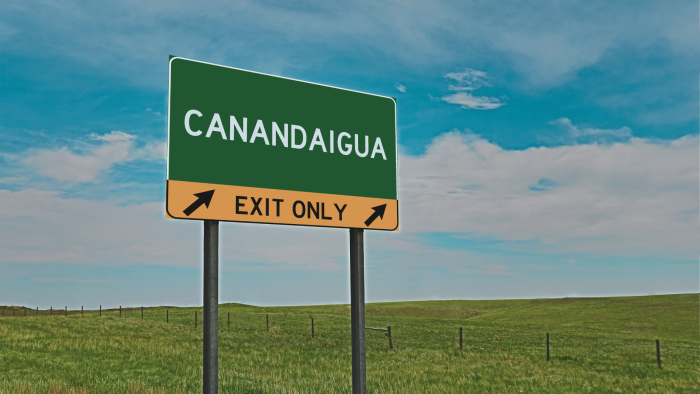Late morning finds me at a saloon counter in Cheyenne, nursing a hangover with a pack of Spirits and some hair of the dog. I normally don’t start this early, but it’s Frontier Days, and excess is in the spirit of the season. The famous rodeo, “The Daddy of ‘Em All,” beckons about half a million visitors—almost more than Wyoming’s entire population—to tiny Cheyenne for bull-riding, concerts, and general rip-roarin’ revelry. My sight drifts across the bar to a group of girls in loose-fitting overalls, make-up, and boots.
“We call ‘em buckle bunnies,” the bartender tells me, interrupting my reverie. “But good luck, son, they only go for cowboys.” As if on cue, a strapping buckaroo saunters over and strikes up a conversation with the gals. Fresh from the rodeo, our cowboy Casanova is dressed in his Western best: a white Stetson, oversized belt buckle, and a gleaming turquoise medallion on his collar. Like an amulet, that bolo tie, a blaze of aquamarine and silver against a black button-down, is hypnotizing.
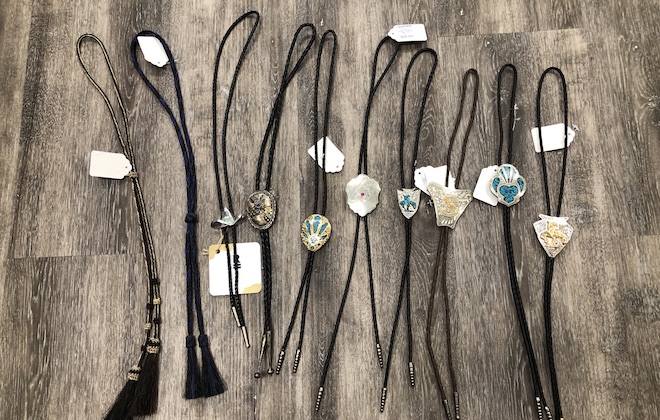
Credit: Rein It In
The Origins of the Bolo Tie
Although now a symbol of Western culture writ large, the bolo tie originated in Zuni and Navajo communities in the Southwest. Long famed for their metallurgical skills, Indigenous craftsmen set semi-precious stones found in the desert—turquoise, jasper, and agate, in particular—into ornate silver frames. Men tied these medallions to neck bandanas in what became the modern bolo tie’s predecessor. Indigenous cultures considered turquoise, symbolic of the sky and water, especially sacred, a stone worthy of wearing close to the heart. Hardy leather strings eventually replaced bandanas, and soon, bolo ties, less stuffy than Easterners’ fabric neckties, were synonymous with the West.
But what’s an origin story without a competing origin story claiming credit? Another tale of the bolo tie’s origin describes how an Arizonan cowboy, Victor Cedarstaff, tied his silver hatpin around his neck when riding in strong winds. Fellow ranch hands teased Victor about his purty “tie,” but the trend of wearing hat pins as necklaces caught on. Urban legend or not, Victor Cedarstaff filed a patent for the bolo tie circa 1950.
How to Wear a Bolo Tie
Like a beautiful watch or bespoke suit, bolo ties are exemplars of exquisite craftsmanship, a work of art you carry on your body. Wearing my favorite bolo tie, a flame-hued jasper medallion from Hells Canyon Bolo, feels like wearing a piece of the desert’s soul. As with all eccentric sartorial decisions, wearing a bolo tie demands confidence. Especially on the East Coast, a bolo tie makes a bold statement. When I don mine in New York City, I receive a fair share of quizzical looks, but also plenty of compliments and friendly questions. Here is an accouterment requiring the wearer, like Clint Eastwood in a Spaghetti Western, to give no shits whatsoever.
Bolo ties pair handsomely with button-down shirts, jeans, or even suits. In New Mexico and Arizona, men wear bolo ties to formal events like weddings, funerals, and business meetings. Putting on a bolo tie is even quicker than a traditional tie: Simply slide the medallion to the end of the leather cord, situate the cord within your collar, and slide the medallion back up. Some wear the bolo all the way to the top button; others choose to leave the top button open, wearing it loosely. Both styles look good.

Credit: Fiona Montagne Photography
Where to Buy Bolo Ties
Hells Canyon Bolo Co.
While based in Idaho, Nick Bryant travels the world in search of stones to set within his gorgeously wrought frames of sterling silver or jeweler’s bronze. Echoing the Zen ideal of wabi-sabi, beauty enhanced by natural imperfections, Bryant’s bolo ties emphasize the rugged splendor of cut minerals. The metalwork, remarkable in its own right, serves simply as a flourish to the raw beauty of polished jasper, agate, turquoise, and other such semi-precious stones.
In addition to bolo ties, Hells Canyon crafts masculine accouterments like rattlesnake hatbands, money clips, and rings. Bryant’s respect for the traditional craftsmanship of Idaho pioneers initially drew him to jewelry making, but he insists that you don’t need to be a Westerner to wear his handiwork. “People everywhere, regardless of geography, are drawn to the poetry of the West: the wide-open spaces, the rugged individualism, the solitude,” he says. “I try to channel that romanticism, emotions you don’t need to be a cowboy to appreciate.” With a chuckle, he adds, “Hell, I ride a motorcycle, not a horse.”
Most Hells Canyon bolos will set you back around $400, but they come with a lifetime warranty. Bryant and his team offer deals on sets of matching bolo ties—memorable gifts for your groomsmen or close buddies. Hells Canyon Bolo Co. ships ties all over the U.S.
Indigo Buffalo Turquoise
While I was in Cheyenne for Frontier Days, my friendly barkeep suggested Indigo Buffalo Turquoise for high-quality Western jewelry. There, I bought my first bolo tie, a silver-rimmed turquoise oval the color of the prairie sky, in addition to a pair of turquoise earrings for a special lady. As with fine art or antiques, it’s important to find trustworthy sources when buying turquoise, as passing off knock-off stones as genuine is all too common a scam. Indigo Buffalo is one of the most reputable purveyors of turquoise in the West, with a staff well-informed about the provenance and styles of their jewelry. Emily Reisdorfer, the owner, curates necklaces, bolo ties, and bracelets from all over North America, showcasing styles ranging from Navajo and Zuni to Spanish and Mexican. If in town during Frontier Days, it’s also worth perusing Indian Village, an area near the rodeo grounds set aside for Indigenous craftsmen, chefs, performers.
Calgary Stampede
You might be surprised to learn Canada boasts one of the most robust ranching and cowboy cultures in North America. In fact, Alberta, the Canadian province adjacent to Montana, has been a thriving cattle region for centuries. Like the famous Frontier Days in Wyoming, The Calgary Stampede, featuring 10 days of rodeo and festivities, draws world-class riders from around the globe along with mega-concerts and city-wide celebrations.
Convening Indigenous craftsmen from around the West, Stampede’s Elbow River Camp houses silversmiths, jewelers, and leatherworkers from at least a dozen Indigenous nations. The last time I attended Stampede, I picked up a bolo tie, black onyx within a copper frame, from an Arapaho artisan for $200. And if you find yourself in Calgary outside of Stampede season, you can thrift whimsical bolo ties and high-quality Western wear at Rein It In, a famous western tack consignment store. Their unconventional bolo ties—pendants like skulls, crosses, and stars wrought in bronze—cost from $20 to $200.
Learn MoreLead image credit: Fiona Montagne Photography

